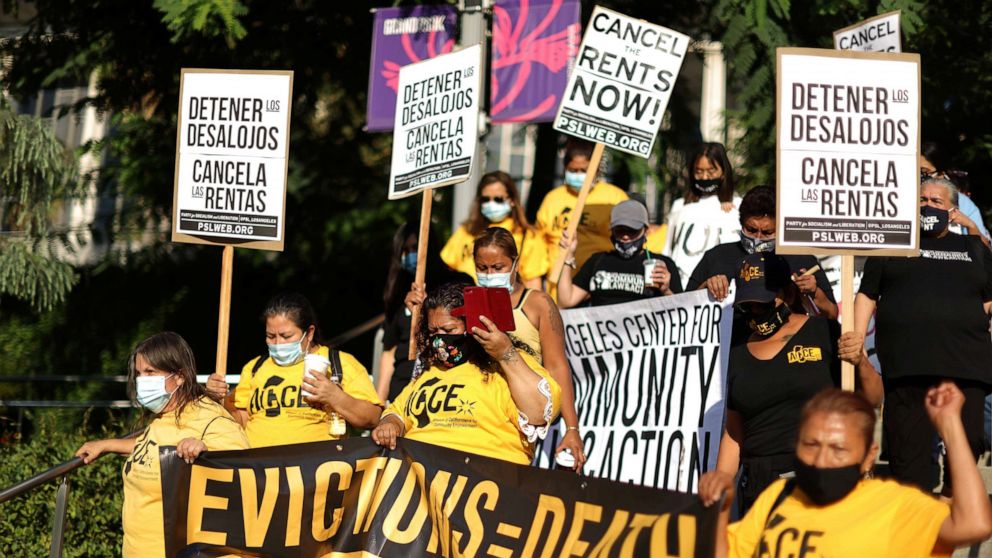
The White House moved aggressively on Friday to revive stimulus talks that President Trump had called off just days earlier, putting forward its largest offer for economic relief yet as administration officials and embattled Republican lawmakers scrambled to avoid being blamed by voters for failing to deliver needed aid ahead of the election.
The new proposal's price tag of $1.8 trillion, which Treasury Secretary Steven Mnuchin presented to Speaker Nancy Pelosi in a roughly 30-minute phone call, was nearly double the original offer the administration put forward when talks began in late summer.
Many things are taking place:
Tahoe Prosperity Center releases COVID-19 economic impact report | TahoeDailyTribune.com

The Tahoe Prosperity Center recently released results of an economic study for the Lake Tahoe Basin, evaluating the economic impacts of COVID-19 and strategies moving forward.
The report highlighted a continued decline in the overall local population, employment that hasn't recovered from the Great Recession, and an opportunity for economic growth through non-tourism sectors.
The ongoing effects of COVID-19 also make it more difficult to reverse economic losses, according to the study, as depressed demand results in job losses, and less consumer-driven tax receipts reduce local government's discretionary spending power.
The world economy - The peril and the promise | Special report | The Economist

None of this comes cheap. Public borrowing is soaring. In June the IMF forecast that the overall gross public-debt-to- GDP ratio of advanced economies would rise from 105% in 2019 to 132% by 2021. The rising burden has fostered a new financial activism. Central-bank balance sheets have ballooned as they have created trillions of dollars to soak up government debt, and the European Union is jointly issuing debt at scale for the first time to pay for its recovery fund.
At first the response was framed as temporary. "What we're trying to do is to freeze the economy," said Peter Hummelgaard, the Danish employment minister, in March. (Denmark can claim to have inspired other furlough schemes.) Experience suggested that rich-world economies could unfreeze quickly after a disaster. After Hurricane Katrina ravaged New Orleans in August 2005, unemployment shot up from around 6% to over 15%, but it fell back below 6% by February 2006.
Economists, business leaders warn of 'huge' consequences to halting stimulus talks -

The coronavirus pandemic clobbered the U.S. economy with unprecedented speed in March, shutting down huge swaths of industry and pushing 22 million people out of work in a little over a month. While approximately half of that number of jobs lost have been gained back, the U.S. economy remains deeply entrenched in pain and the new layoffs continue .
Democrats, led by House Speaker Nancy Pelosi, are pushing for a more all-encompassing $2.2 trillion stimulus plan, whereas Republicans have scoffed at the price tag and are uneasy about adding to the national debt . Meanwhile, Trump has urged negotiators to pass smaller, standalone bills -- a move Pelosi has rejected .
And here's another article:
Trump makes $1.8 trillion economic relief offer, but deal with Pelosi remains elusive - The

Treasury Secretary Steven Mnuchin made an over $1.8 trillion offer to House Speaker Nancy Pelosi (D-Calif.) Friday in a renewed search for an economic relief deal, but agreement remained elusive as Pelosi said her terms still weren't met.
"Of special concern, is the absence of an agreement on a strategic plan to crush the virus," Pelosi's spokesman, Drew Hammill, said on Twitter after Pelosi and Mnuchin spoke for 30 minutes Friday afternoon. "For this and other provisions, we are still awaiting language from the administration as negotiations on the overall funding amount continue."
International trade - Changing places | Special report | The Economist

F OR A TIME economic contagion seemed more threatening than the pathological kind. Though the spread of covid-19 was mainly in China, the damage was appearing along supply chains that produce the world's goods, notably cars and consumer electronics. China is the world's second-biggest exporter of parts, so as its factories shut down, manufacturers everywhere faced delays. Even before the virus took off in South Korea, Hyundai had halted production because of a shortage of imported parts.
Global supply chains were forged in the period from the mid-1980s until the financial crisis 25 years later. Trade surged in volume and changed in nature. It grew nearly twice as fast as global output, as emerging markets in Asia were bedded in to the world economy. After China joined the World Trade Organisation in 2001, its share of world exports of many parts and capital goods grew from under 10% to over 30%. Countries often specialised not in specific goods, but in bits of them.
Interest rates - The eternal zero | Special report | The Economist

When covid-19 struck, there was no such ambiguity. Global stockmarkets tanked in March. For a time even American Treasury bonds, the world's safest asset, fell in price amid a scramble for cash and dysfunctional money markets. But eventually the signal dampener kicked in. The Fed cut interest rates and unleashed a torrent of liquidity to keep dollar markets functioning, preventing a credit crunch, mass bankruptcies and lay-offs. Other central banks followed suit.
Markets were not just calmed: they began a bull run that defied gloomy forecasts. Between the start of April and the end of August, with central banks pinning bond yields down, global stockmarkets rose by 37%, fuelled by rising technology shares. America's corporate-bond markets saw record issuance in the first half of the year. Many housing markets also defied gravity.
Trump's Businesses Face Debt Deadlines Amid Economic Slowdown - WSJ
The organization's financial situation could become more challenging if President Trump wins re-election because of the complications, ethical quandaries and political dynamic of lending to a sitting president, according to real-estate finance executives and a lawyer who handled presidential ethics.


No comments:
Post a Comment